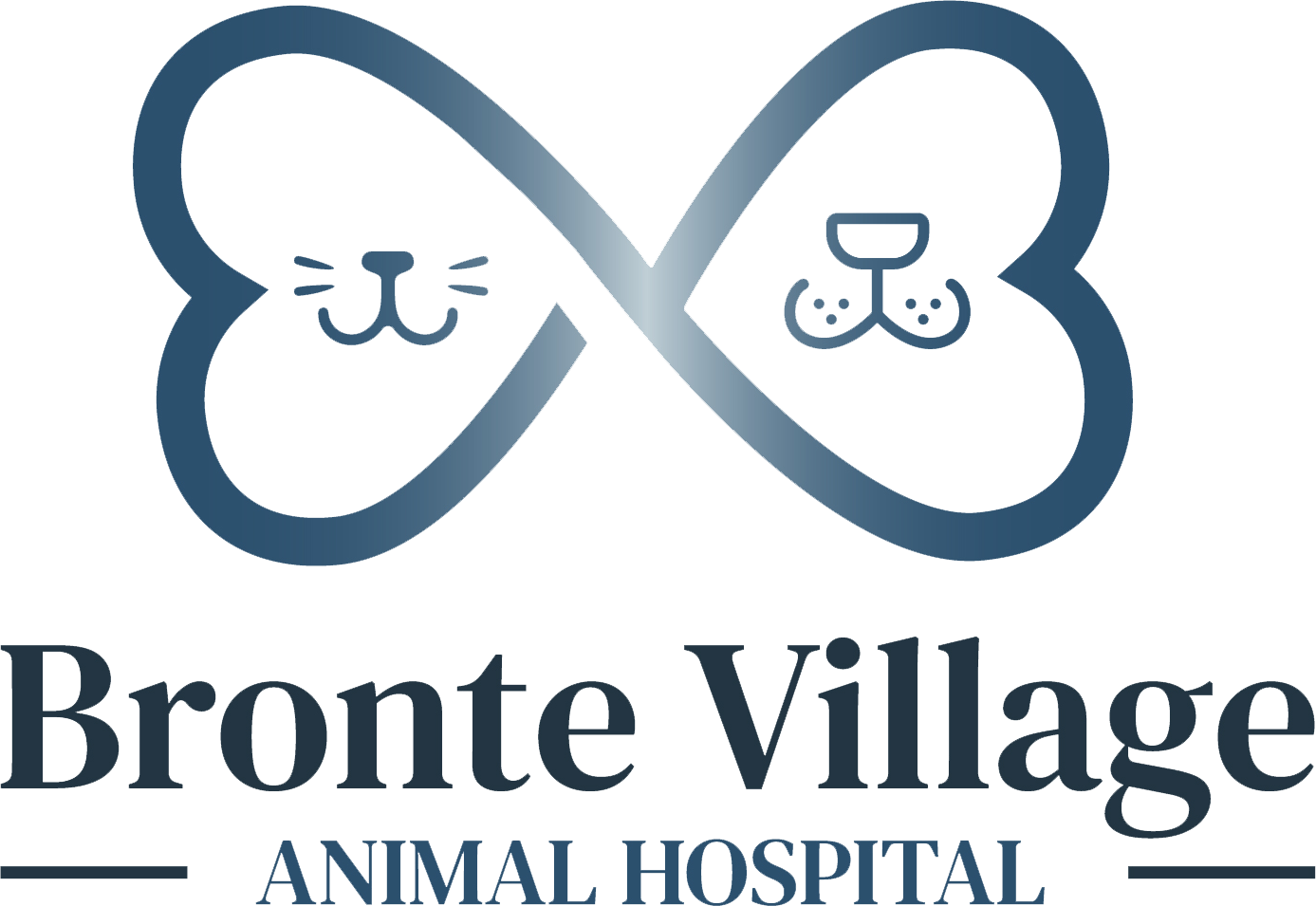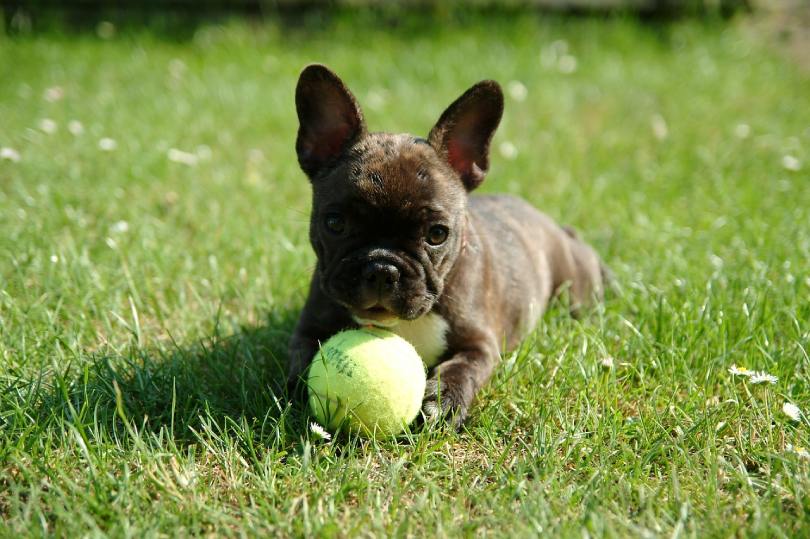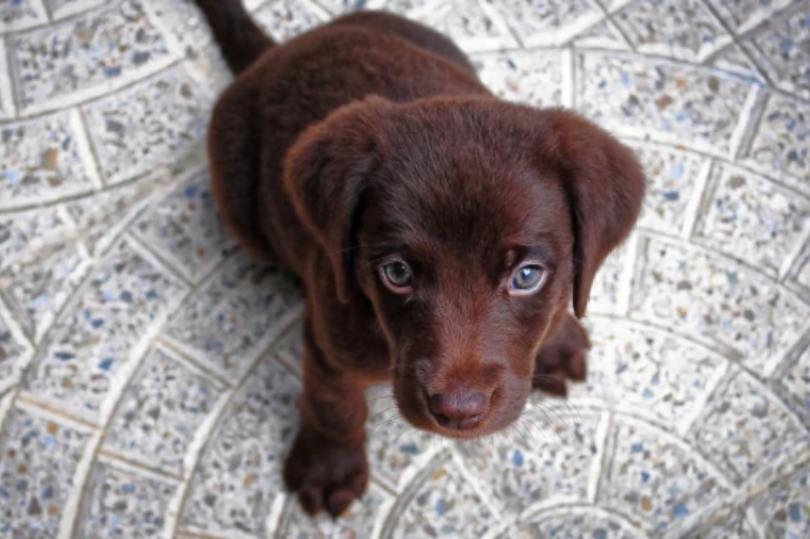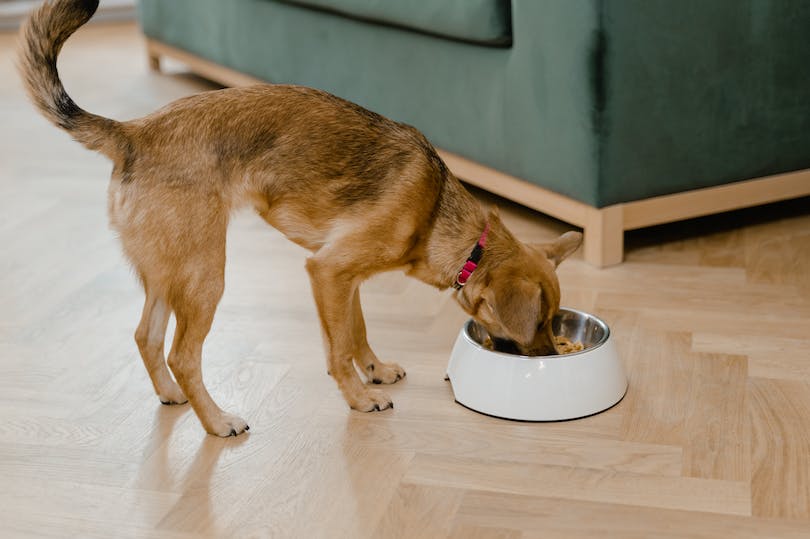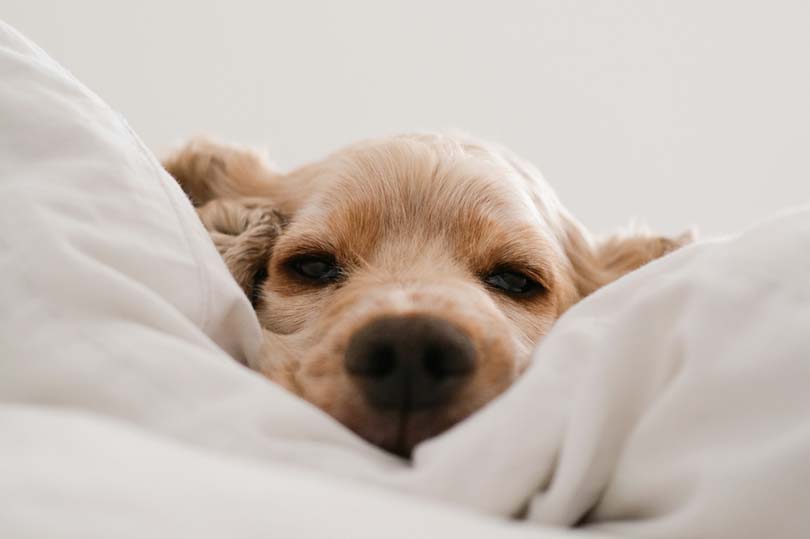Resources
New Dog Owner Guide
New Dog Owner Guide
Congratulations on welcoming your new furry family member to your home!
Dogs are an endless source of joy, laughter, and love – but they are also a big responsibility. This guide is for you if you’ve never owned a dog before, you haven’t owned a dog in a long time, or you’d like to teach your children about owning a dog!
We’re here to help explain everything you need to know about caring for your new puppy or dog.
Make Your Home Dog-Friendly
Make Your Home Dog-Friendly
Dogs are inquisitive creatures who will want to investigate their new home thoroughly.
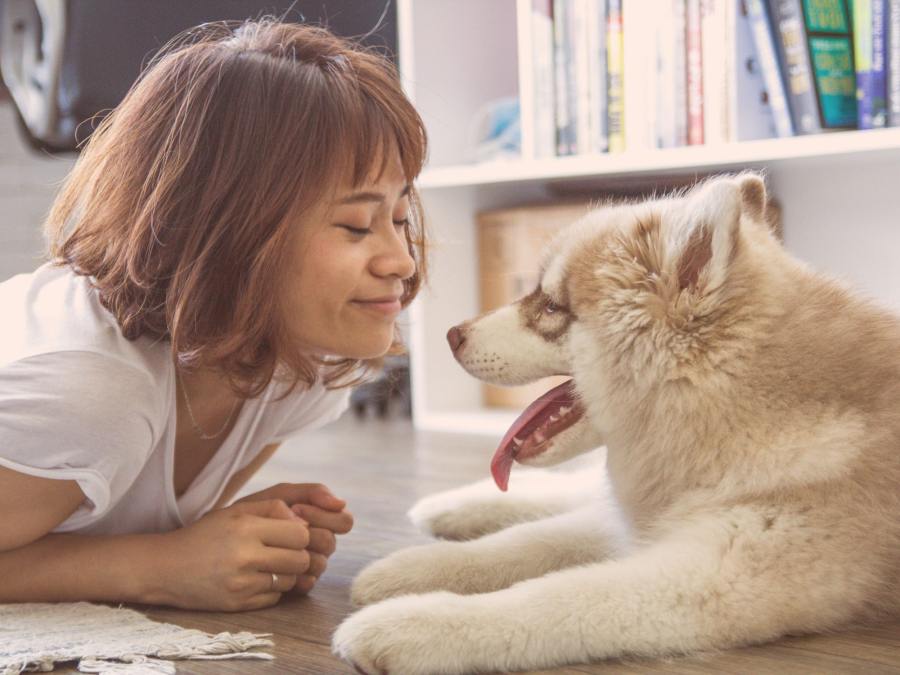
Safety First
Before you bring your new pup home, you’ll want to dog-proof it as well as you can. Dogs love to get into everything and anything they can find, even if it’s bad for them!
When looking for potential hazards, it can help to get down to a dog’s eye-view and assess your surroundings from your hands and knees.
Hazards to watch out for:
- Remove small objects like buttons, rubber bands, needles, or plastic that your dog could choke on or swallow.
- Pick up anything on the floor or within reach, like toys, laundry, or food.
- Cover or move any electrical cords that are within snout-range.
- Keep garbage cans securely shut.
- Move plants out of reach (some plants are toxic to dogs).
- Make sure any chemicals (cleaning supplies, paint, anti-freeze, etc.) are securely stored somewhere your dog won’t be able to access, like a high cupboard or a cabinet with baby locks.
- Use a baby-gate to keep specific areas of your house off-limits – especially elevated areas like balconies or stairs.
- During the holiday season, be careful of glass ornaments, tinsel on the tree, and indoor light strings.

Dog Supplies
Once you’ve acquired all the supplies your dog needs, set everything up in one spot in the house. This way they’ll know where THEIR stuff is.
What you’ll need:
Food and Water Bowls
Choose a smaller bowl for food and a larger bowl for fresh water. Stainless steel and ceramic bowls are the easiest to keep clean!
Crate and Bedding
This is a place for your dog to go when you can’t supervise them or when they need a place of safety. Add some blankets or a cushion to make it comfortable. It should be big enough for them to stand, turn around, and stretch. Use positivity to help your dog associate their crate with comfort and reward (never use the crate for punishment!).
Toys
Toys should be free of buttons, strings, and anything that could be bitten off and swallowed. Stick with rubber balls made for dogs (they are harder to tear apart!), non-stuffed toys, and kongs.
Treats
Treats are one of the best tools for behaviour training, when used sensibly. It is tempting to be liberal when it comes to treating our “little babies”, but (like giving candy to a human child) moderation is key.
Collar and Leash
Add an identification tag with your name and phone number to your dog’s collar in case they get lost.
Grooming Supplies
Purchase a brush to groom your dog and a clipper to keep their nails from getting too long.
First Impressions
First Impressions
It’s time to set the tone for your new family member as you introduce them to your home, your family, and your other pets.
Here’s what you need to know:
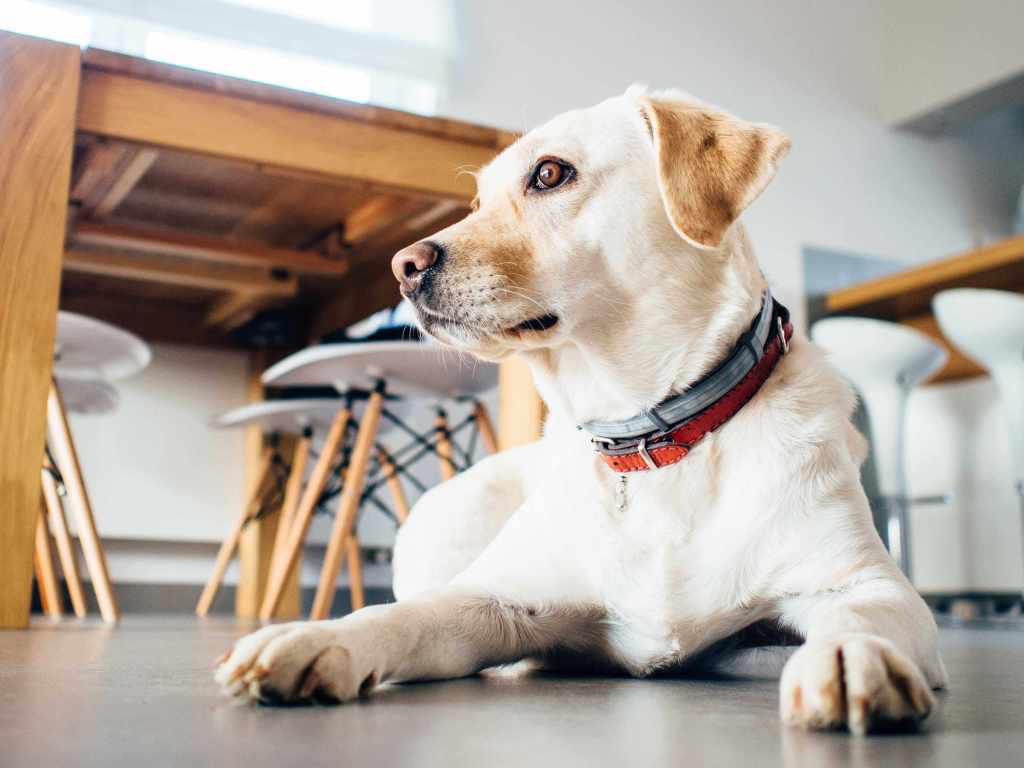
Let Your Dog Explore
When you first bring your dog home, they’ll be feeling overwhelmed by all of the new things and people.
Let them get a bearing on their new home by walking on the different flooring types (carpet, tile, hardwood, etc.), exploring, and sniffing. While your pup is investigating, don’t distract or scare them – make sure everyone in the house stays calm and relatively quiet (especially for children – no playing, screaming, or running around).
After the initial exploration, give your dog time to get used to your home and family before introducing strangers, engaging in play, or feeding.
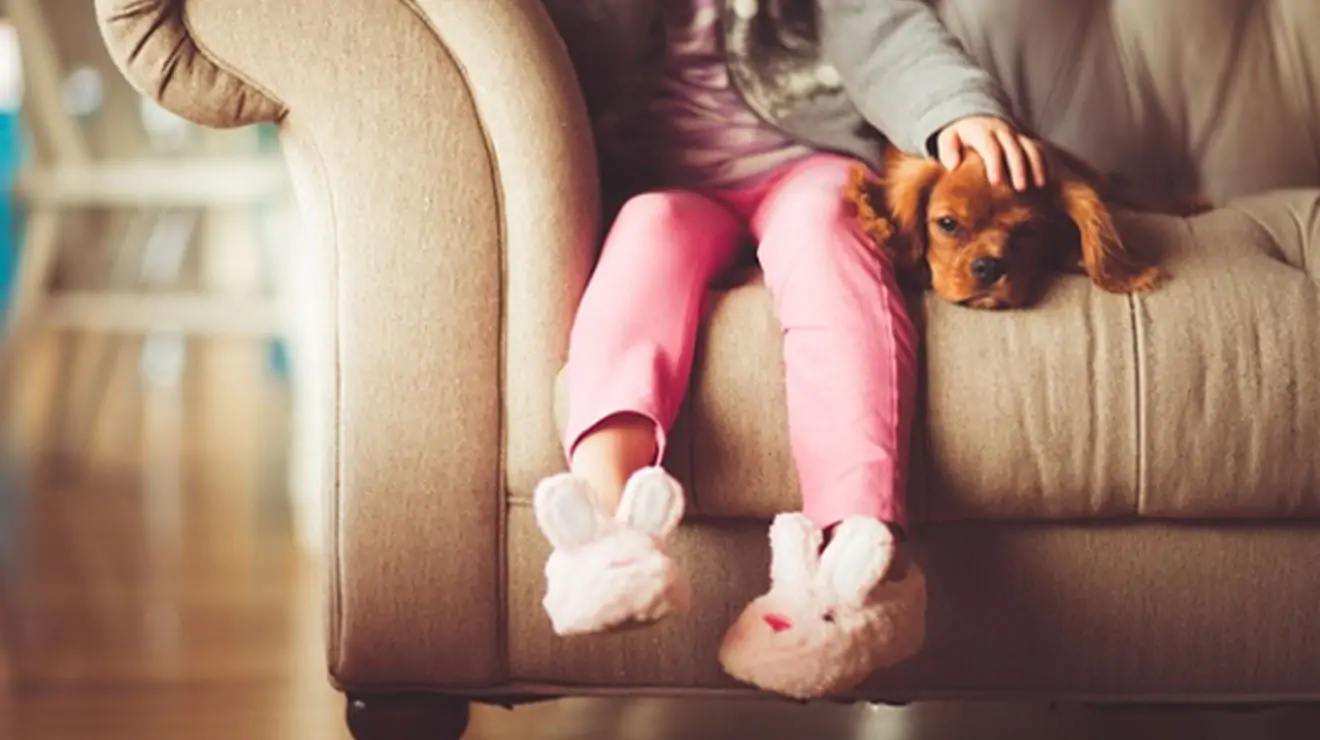
Introducing Children to Your New Dog
Your kids are probably beside themselves with excitement about the new doggie – they can’t wait to play and show the dog just how much they love them!
However, it’s important to prepare your children ahead of time so they understand the boundaries and know how to approach the dog without being overwhelming. Kids don’t realize how they might be hurting or scaring a dog who is already on edge in an unknown environment.
For everyone’s safety, an adult should always supervise when kids are meeting or playing with a new puppy or dog (no matter how small the dog is!).
Help your kids make friends with their new pet in no time:
- Let your children meet the new dog before the dog comes home.
- When you do bring your new dog home, keep them on a leash and have your children sit down to say hello. Sitting will help the kids be calmer, which will help your dog be more relaxed. Let the dog come to them.
- Explain to your kids that they might scare the puppy with sudden movements, loud noises, or by trying to pick it up.
- Teach your kids not to pinch, pull, or squeeze the dog.
- Don’t let children feed your new dog until the dog is settled in.
- Don’t let your kids take the dog’s toys, and don’t let your dog take the kids’ toys.
If your dog seems nervous or defensive at any point when interacting with children, take a break until the dog is comfortable. Make sure your new pup has a safe place to go that’s off-limits to the children – a crate is great for this!
Soon, your kids and their new doggie will be getting along great and forming bonds that last a lifetime!

Introducing Your New Dog to Your Other Pet(s)
Hopefully the pets you already have are just as excited about the new addition as you are!
Here are 10 steps to help your whole household get along:
- Let your pet(s) meet the new dog before the dog comes home for the first time.
- When you first bring your new dog home, keep them separate until all pets are calm and relaxed, even if that takes several hours.
- Enforce the rules right away with the new dog – dogs thrive on rules and consistency.
- Introduce each pet on a leash (for cats, let them approach on their own).
- Watch for signs that either pet is stressed and separate them if necessary.
- Crate the new dog periodically to give your resident pet a break, especially if they seem stressed or annoyed with the new dog. Your pup may spend a lot of time crated in the first week or two, but a slow introduction is better for everyone in the long run!
- Spend time individually with the new dog and the resident pet(s).
- Supervise playing with toys to avoid spats, and wait a few weeks before giving something of high value like a stuffed bone or rawhide.
- Slowly allow your new and resident pets more and more supervised time together until they’re comfortable with each other.
- Go back to a previous step in this list if your pets seem stressed or aggressive at any point! Don’t rush it and don’t try to force them to be friends too fast.
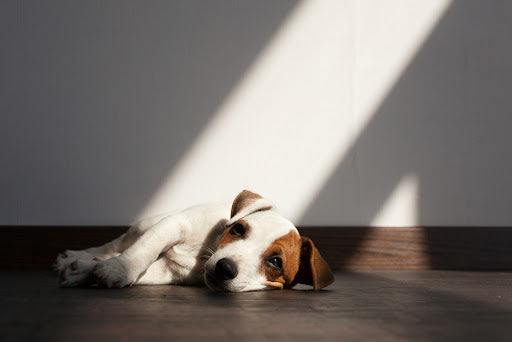
The Adjustment Period and Establishing the Rules
Coming into a new home, your dog will need some time to get used to all of the new sights, sounds, smells, people – and, rules.
- Expect Accidents:
Even the most housebroken dog can have accidents in a new environment. After your pup has finished sniffing and exploring, take them to their toileting area immediately and spend a good amount of time getting them used to it. Don’t be surprised if your dog has accidents in the first days at home.
- Enforce the Rules:
It can be tempting to be a little lax on the rules when you bring a new dog home. Resist the temptation now so you can avoid problems later! It’s much easier to prevent a bad habit from starting than it is to break one. For example if you don’t want dogs on the furniture, don’t let your new pup on the furniture right from the get-go!
Dogs like rules and structure – it makes them feel more secure to know exactly what is expected of them and exactly what happens if they don’t follow the rules. It also helps keep order in the household! If you have other pets who already know the rules, they will be stressed out by an unruly newcomer who isn’t following the rules.
Puppy and Dog Training
Puppy and Dog Training
Puppies are cute bundles of fun – curious and looking for trouble. They have no idea what is and isn’t allowed, so it’s important to be patient with them. Even adult dogs who are new to your home may need some training or re-training to help them learn how you want them to behave.
Chewing shoes, biting hands, digging, and elimination accidents lead to frustration. You are not alone; many owners have trouble addressing these behaviours.
Jump to your specific training challenge:
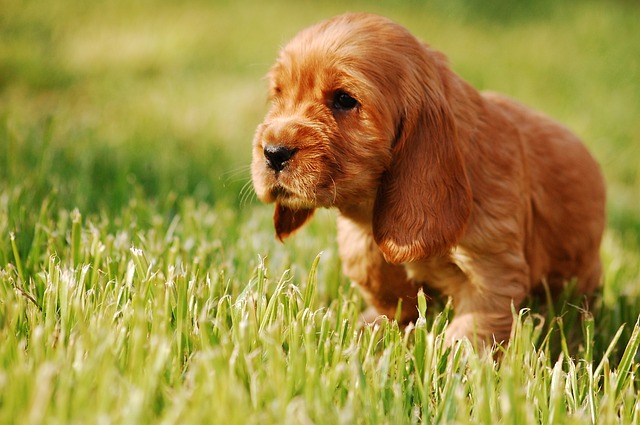
Puppy & Dog Training 101
Don’t Take Good Behaviours For Granted
The best way for your puppy to learn to do what you want is by rewarding them when they have done something acceptable. Owners should actively look for desired behaviours so the puppy (or dog) can be praised (even when no command is given).
Puppies engage in predictable behaviours. They are active, inquisitive, and get into everything. Puppies will eliminate anywhere and chew on everything until trained. Constant close supervision and/or appropriate confinement may be necessary for some until they reach two years of age.
A puppy has a short attention span and is easily distracted. You can set your puppy up to fail if you train too long or ask them to do something in the presence of distraction.
Be Consistent
The whole family needs to sit down and agree on acceptable vs unacceptable behaviours. All members must handle specific behaviours in the same way. If anything is inconsistent, your dog will be confused, learning will be delayed, and both the owner and dog will be frustrated.
- Avoid Physical Punishment
One of the most important things that a puppy must learn is that the human hand is a friend. Owners must understand that if they strike the puppy, the consequences could be:
- Hand shyness
- Fear-biting
- Avoidance of humans
- Aggression
- Submissive urination
Unfortunately, it can be difficult or impossible for adult dogs to unlearn their fear of physical punishment and associated behaviours. If you’ve adopted an adult dog who has been subjected to physical punishment at their previous home, you may want to work with a dog trainer to help your dog overcome this background.
Correction
A loud, abrupt, semi-startling reprimand is usually adequate to interrupt/distract an undesirable behaviour. Once the dog has stopped, praise them and remove them from the situation. To be effective, correction must be given during the behaviour, every time it occurs, should be intense enough to stop the behaviour, and must stop when the behaviour stops.
If necessary, use a shake can, air horn, whistle, or other device if verbal corrections are ignored.
Don’t rely on punishment alone to shape your new dog’s behaviour; stop the bad behaviour and reward the good! It has been proven that dogs learn faster through positive reinforcement than punishment.

Housetraining
Housetraining can go smoothly if owners follow these simple rules:
Teach the Puppy or Dog Where to Go
The speed at which the pup learns where they’re supposed to eliminate depends on how consistently the owner accompanies them to the proper elimination area and rewards them.
Teach the Puppy or Dog Where to Go
The speed at which the pup learns where they’re supposed to eliminate depends on how consistently the owner accompanies them to the proper elimination area and rewards them.
Control Access to Food and Water
Puppies should be fed 3-4 times per day for the first 16-20 weeks of life. At that point you can feed your dog 2-3 times daily (or as directed by your vet) at the same times each day. Only leave the food down for 20 minutes, and do not feed for 3-4 hours before bedtime. You will also want to take the water away 1-2 hours before bedtime to reduce overnight accidents.
Adequate Supervision and Confinement
Until your dog has not soiled in the house for 4 weeks in a row, keep them either under constant supervision or confined to their crate/small room. A leash can be an important tool for preventing the pup from sneaking away.
Inadequate supervision and confinement are the most common reasons for failure to housetrain a puppy or dog.
Teach the Pup to Signal when They Have to Eliminate
You can help teach your dog to signal by keeping them on a leash indoors, especially during times when they are likely to have to eliminate. Puppies and dogs learn to sneak away to eliminate so they can avoid a scolding – but when prevented from sneaking away, they’ll be come anxious and vocalize or fidget. Since you’ll be nearby, you will be able to notice these behaviours and take your dog outdoors.
It doesn’t take too many repetitions of this for the pup to learn that being close to an owner and vocalizing or fidgeting will result in a trip outdoors.
Odour Control
Use a good commercial product made specifically for puppy or dog elimination odours. We have found K.O.E.™ to be an inexpensive but effective product. If a dog smells that another animal has eliminated in the area, they will think it is acceptable to do so as well.
Correction
Punishment should be avoided. The only correction permitted is a loud “No” to interrupt the puppy or dog when they are caught in the act of eliminating in an inappropriate area. Submissive or greeting urination should never be punished.
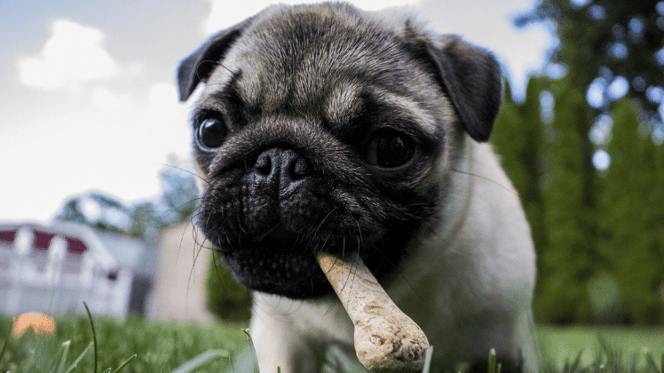
Destructive Chewing
Controlling the destructive chewing propensities of a puppy or untrained dog is of utmost importance for most owners. However, it’s important not to rely solely on punishment to correct unacceptable chewing behaviour – it’s actually more effective to correct the problem by reinforcing positive behaviour!
This can be done by providing the pup with a safe environment where it has sufficient outlets and interesting toys to chew. Since an excess of unused energy can further contribute to the desire to explore, chew, and destroy, plenty of play and exercise is a must.
Selecting Appropriate Chew Toys
When selecting chew toys, you should begin with a variety of toys and determine which types your pup prefers. Rotate through different toys every few days to keep them novel and interesting.
Be sure to reward the dog every time you see them chewing their toys by giving them affection or engaging in play.
Toys made of nylon and durable rubber are most practical. Toys that have cavities or depressions can be packed with food to capture the dog’s attention (Kong Toy®, Bite-A-Bone®, etc.). Applying a light coat of meat juice, peanut butter (do not use peanut butter with the ingredient “Xylitol”), or cheese spread to toys will also help extend the length of time that they keep your pup occupied.
Preventing and Deterring Inappropriate Chewing
Even with an excellent selection of chew toys, there are numerous household items that may still be more inviting. Until you can trust your new puppy or dog, you must keep them under continuous supervision or confined to a safe area (e.g. dog crate or exercise pen). As puppies grow older and are allowed more freedom around the home, you may need to take extra care to prevent mistakes.
Never give items to your dog to chew that are similar to household items. Providing items such as old clothing can lead to problems, since the dog may have difficulty distinguishing between old and new.
You can teach the dog to avoid your possessions by making them taste bad. Commercial sprays (Bitter Apple), oil of citronella, or a small amount of cayenne pepper (mixed with water) may be successful deterrents. Avoid physical or delayed correction methods.
Distract your dog from chewing on the not-acceptable item, reward the stopped behaviour, and provide them with an acceptable toy to chew.
Chewing on Plants
Many house plants can be toxic to dogs. You can mist plant leaves with water and sprinkle them with cayenne pepper to discourage chewing, or hang motion-activated alarms in large plants or Christmas trees.
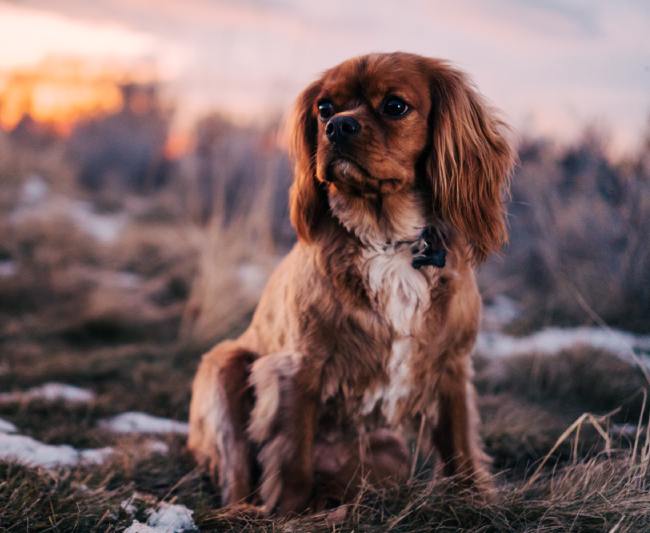
Leadership Exercises
You will want to keep these rules in place until you have good control of the puppy or dog, and they dependably listen and respond to commands.
- Gain more control of the puppy/dog
- Increase the dog’s dependability in responding to commands
- Provide structure and consistency in interactions between the pup and family
- Reduce impulsive behaviour
Like always, consistency is very important. The whole family must participate and follow the recommendations in the same way.
Ask the puppy or dog to respond to a command, such as “Sit,” prior to getting ANYTHING they want or need. This includes before you put their food down, before you give them a treat or toy, beginning play, etc.
Don’t Tell Me What to Do
Do not allow your new puppy or dog to successfully solicit attention from you. Any nudge, whine, bark, push, lean, etc. for attention must be ignored. Pull your hands in, lean away from the dog, and look away. Get up and walk away if they are exceptionally pushy and difficult to ignore.
Do not scold, say anything, or push the pup away from you – this is a form of attention, and the dog is “getting what it wants”.
Once the dog stops soliciting for ten seconds, you can ask it to sit or sit/stay and give it some attention.
Sit… Stay
Any time you begin to move from one area of the home to another, ask your dog to sit/stay and wait for a release command to follow you. Also, request a sit/stay prior to going up and down stairs, as well as in and out of the home.
Remember, puppies specifically have short attention spans. You only need for a puppy to stay for one to two seconds, and you do not need to walk away from the puppy during the stay to do this properly.
It is not as necessary to be as rigid about this rule as you should be about “Nothing in Life is Free” and “Don’t Tell Me What to Do”. It is understandable that it may be difficult or impractical to have the dog sit/stay every time you move.
“Ruff” Play
Puppies can easily get carried away when playing and they rely on their littermates to tell them when things are getting too rough. Owners and family replace littermates, so it is your responsibility to inform the puppy when things are getting out of hand.
When you’re playing with your puppy and it bites too hard, let out a loud sharp “ouch”. If the puppy stops the behaviour, wait a few seconds and resume playtime. If the puppy continues with the non-desired behaviour, play time is over and you should walk away.
Doggie Wellness
Doggie Wellness
What does a happy and healthy dog need in life besides a loving family?
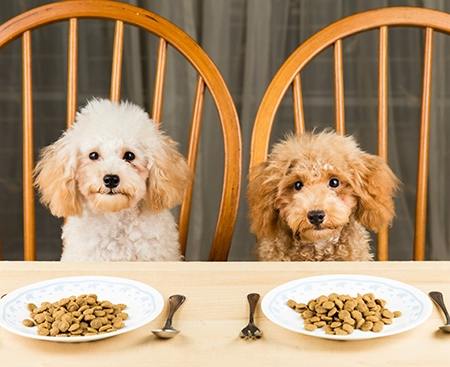
Dog Nutrition and How to Change Foods
Talk to your veterinarian about choosing a diet for your new dog based on their age, breed, and requirements (for example, large breeds need joint support, while small breeds are more prone to dental and urinary issues).
A healthy diet can keep your dog’s organs, bones, muscles, and teeth healthy, enhance the quality of their coat, improve their immune system, and give them better overall health. A dog eating the right food has a longer, happier life ahead!
Establish a regular feeding schedule; we don’t recommend “free feeding” (leaving out as much food as your dog wants to eat throughout the day). Free feeding can lead to stomach upset and eventually, obesity, which can cause further health complications.
While you shouldn’t leave food out all day, be sure to provide a big bowl of fresh water so your pup can drink whenever they are thirsty.
We’d recommend not giving your dog any table scraps, but we know a lot of pet owners like to treat their pups with human foods every now and then. If you are going to feed your dog any “people-food”, it’s important to know that some foods that are safe for humans are toxic, and potentially deadly, for our pets.
Never feed your dog these foods:
- Chocolate
- Coffee
- Grapes, raisins
- Avocado
- Macadamia nuts
- Garlic, onions, onion powder (or anything in the onion family!)
- Alcohol
- Moldy or spoiled foods
If you’re unsure about which foods are safe, ask your vet or look it up on the Pet Poison Helpline!

Exercise Requirements
Dogs can become destructive if they are bored and not getting enough exercise in their day &ndasth; which can mean a chewed up couch or goodbye to your favourite shoes!
No matter what breed or age, your dog needs exercise. On top of playtime, you should plan to take your dog for a long walk at least once per day (more for high energy dogs!).

Grooming
Grooming helps you build trust and an emotional bond with your dog. Most dogs will come to enjoy being groomed after a period of adjustment, even if they’re not used to it.
Brushing and Combing:
No matter your dog’s coat type, regular brushing will keep it shiny, healthy, and free of matting and knots. How often, and with what tools, depends on their breed. Some breeds even require special grooming. You can also take your dog to a groomer for a little extra love and care.
Your dog’s nails should be clipped regularly – they can become painful when they get too long. Get your dog used to you handling and touching their feet, even when you’re not using the nail clipper! Increasing their comfort with this will help them stay relaxed when you are giving their nails a trim.
Using a nail clipper meant for dogs, hold their foot gently (but firmly) and trim off the end of the nail. Be careful to avoid cutting too far down or you could hurt your dog by cutting the “quick” (soft tissue) inside the nail.
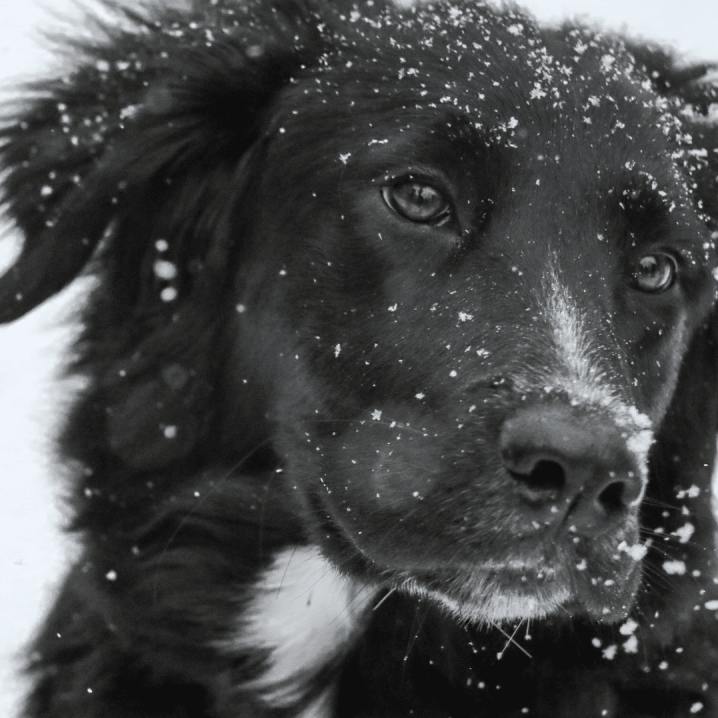
Extreme Weather Warnings
Dogs don’t like extreme temperatures any more than humans do!
Heat Stroke
Your dog is wearing a coat all year round and most of their excess heat can only be released through panting! This means they can overheat quickly in hot weather and get heat stroke.
Heat stroke is a medical emergency – if you think your dog has heat stroke, take them to the nearest emergency veterinarian!
You can protect your dog from overheating by keeping them in the shade on hot days, providing ample water, and never ever leaving them trapped in an enclosed hot space (like a car!).
Frostbite and Hypothermia
In colder weather (especially here in Canada), your pup can get frostbite on the tips of their ears, their paw pads, or their tail. They can also get hypothermia if left in the cold for too long.
Hypothermia is a medical emergency (again, please visit the nearest emergency vet); and if you think your pet has frostbite, you should seek a vet appointment as soon as possible.
To keep your dog cozy in the winter, you can buy dog coats and boots (boots are especially good for protecting their sensitive paws from frostbite and road salt). Don’t stay in the cold too long, and never leave them out in the cold with nowhere to go (or – again – in a locked car). On days when the temperature drops to dangerous levels, it’s best to stay inside entirely!
Locked Cars
We’ve mentioned this twice above, but it’s such an important topic that it needs more attention. Dogs left locked in cars – even for a few minutes – can develop heat stroke or hypothermia (serious health emergencies) or die. The inside of a vehicle gets excessively hot or cold very quickly. You wouldn’t want to be trapped in those extremes, so please don’t do that to an animal.
It’s simple: do not ever leave a dog in a locked car. Even if you think you’re just popping out for a minute, you never know if you might be delayed and your dog left trapped.
Your Dog’s Health
Your Dog’s Health
Bring your new dog in to the vet for a complete health check in the first week you have them. Newly adopted pets are usually up-to-date on vaccines, so this visit will be all about getting familiar with the clinic – and lots of love and treats (no ouchy needles)! Your vet will do a thorough examination to create a baseline for your dog’s health.
Bring your dog to the vet clinic frequently just to say hi (once per month is great) so the vet becomes a stress-free happy place instead of a scary one.

Medical Emergencies
Unexpected injury or illness can happen to even the best cared-for dog.
Keep an emergency veterinarian’s number handy (a lot of emergency vet clinics have fridge magnets) so you can call if anything happens. The emergency vet should be able to tell you what to do next, depending on your dog’s symptoms.
It’s important to protect yourself when transporting an injured dog to the vet – even gentle dogs may bite or scratch out of fear and pain. If your dog becomes agitated, back away.

Vet Check-Ups
We recommend at least yearly appointments for your dog to make sure they are healthy. Your vet will do a nose-to-tail examination and identify any underlying conditions that might impact their overall health – now or in the future.
It’s important to catch any health concerns or symptoms of illness as early as possible – that way, your vet can make proactive recommendations and possibly treat it, or at least avoid any serious complications.
If you notice any of these symptoms in your dog, you should make a vet appointment (even if it’s been less than a year since their last check-up):
- Loss of appetite
- Vomiting (if there is blood in the vomit, this is an emergency!)
- Blood in stool, diarrhea, or constipation
- Difficulty urinating or blood in urine
- Pain
- Hard of breath, excessive panting, coughing, or sneezing
- Limping
- Constant scratching or biting
- Fatigue or listlessness
- Lumps or bumps
- Discharge from the eyes, nose, or mouth
- Anything out of the ordinary that you’re concerned about!
The veterinarian is also your best source for specific information about your dog’s needs, particularly in terms of nutrition, exercise, and general wellness.

Parasite Protection
Parasites are creatures that live off of your pet, either on the inside or outside. At best they make your pet uncomfortable and at worst they can cause life-threatening diseases or health conditions.
No matter where you live or how careful you are, your dog can still pick up a parasite. Luckily, most of them can be prevented with some simple parasite prevention treatments!
| Type of Parasite | Where Can My Pet Get It? | Symptoms | Possible Diseases and Complications | Prevention/Treatment |
| Fleas |
|
|
|
|
| Ticks |
|
|
|
|
| Ear mites |
|
|
|
|
| Mites |
|
|
|
|
| Heartworm |
|
|
|
|
| Roundworm |
|
|
|
|
| Hookworm |
|
|
|
|
| Tapeworm |
|
|
|
|
| Whipworm |
|
|
|
|
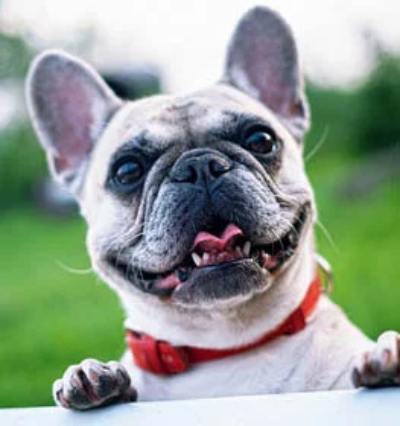
Dental Care
Dental health is very important for your new dog – in fact, dental disease is one of the top most often diagnosed health conditions in dogs!
Dental disease can be painful and, when it goes too far, it can require surgery to treat. On top of that, it can lead to other complications including damaging internal organs or compromising the immune system.
The best thing to do is make a habit of regularly brushing your dog’s teeth (do not use human toothpaste!). You can buy toothbrushes created for pets, as well as dog-friendly toothpaste. Just like humans, daily brushing will keep your dog’s mouth healthy and clean.
You should also bring your dog for regular dental cleanings and examinations with your veterinarian. If dental health is of particular concern (certain breeds are more at risk than others), your vet can also recommend specific dental diets designed for healthy mouths.
It’s important to know that bad breath (“dog-breath”) is not normal! If your dog’s breath smells bad, they likely have tartar buildup and/or oral disease. Take your dog to the vet if you smell anything funky!

Neuter/Spay
Neutering a male dog or spaying a female dog is an important part of becoming a dog owner! Unless you have a purebred dog who you plan on showing or breeding, responsible owners should plan to have their dog neutered or spayed.
Neutering or spaying is simply the procedure of removing your dog’s reproductive capabilities.
It’s a routine surgery that has lasting positive effects, including:
- Male dogs will be less likely to try to wander or escape (looking for female dogs)
- Male dogs will be less aggressive
- Female dogs will not go into heat and are less likely to wander, escape, or attract male dogs
- Certain diseases are less likely to occur in spayed female dogs
- Decreases or eliminates the risk of some cancers in both male and female dogs
- Less likely to mark territory (indoors and outdoors!)
- Fewer unwanted puppies
If your dog still needs to be neutered or spayed, talk to your veterinarian about the right timing and the process involved. Ask your vet what will be done to ensure your dog’s comfort and safety during the procedure.
Note: Not all vet clinics are created equal in this regard. The cheapest option may not be the best one for your dog’s wellbeing. Be sure to ask questions about how your dog will be cared for before, during, and after the surgery.
For example – we pride ourselves on individualizing the process to make sure your pet has close monitoring before, during, and after the surgery. We limit the number of procedures performed each day so your pet can be attended to. All our surgeries have intravenous fluids during the surgery to maintain blood pressure and have access for emergency medications.

Permanent Identification/Microchipping
If your dog gets lost, a permanent ID is the best way to find them again. Animal shelters, vet clinics, and animal control will all check a roaming dog to see if there is a microchip – and if they find one, they will know exactly who to call (you!) to make sure the dog gets back home safely.
A microchip is a safe and simple implant just under your dog’s skin that contains a unique number and can be scanned externally with a microchip reader. It’s an easy process to have your dog microchipped, so be sure to ask your vet about it!
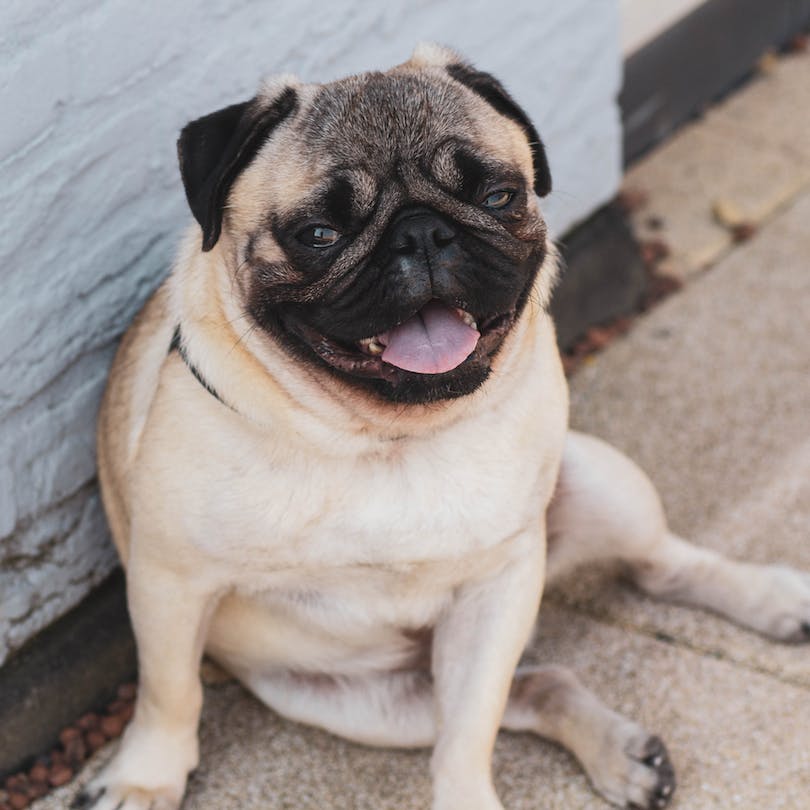
Pet Insurance
If something unexpected happens to your dog and they require emergency care, it can quickly become costly.
Pet insurance works like health insurance for people; it ensures you won’t have to bear the brunt of those costs alone – or be forced to make an impossible decision due to high expenses.
Many different companies offer pet insurance, and your veterinarian will be able to advise you on which ones they recommend!
